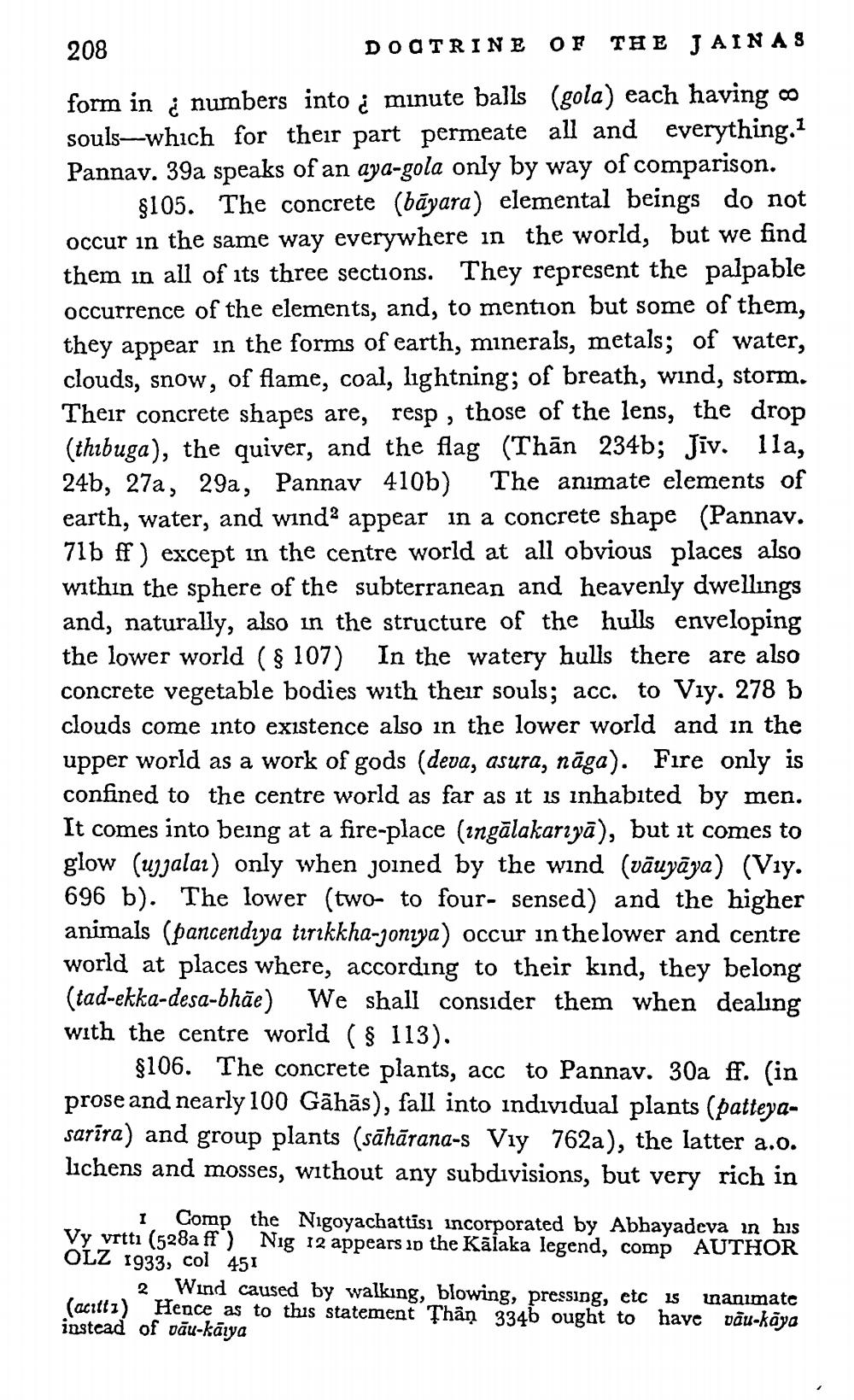________________
208
THE JAINAS form in numbers into ¿ minute balls (gola) each having co souls-which for their part permeate all and everything.1 Pannav. 39a speaks of an aya-gola only by way of comparison.
§105. The concrete (bayara) elemental beings do not occur in the same way everywhere in the world, but we find them in all of its three sections. They represent the palpable occurrence of the elements, and, to mention but some of them, they appear in the forms of earth, minerals, metals; of water, clouds, snow, of flame, coal, lightning; of breath, wind, storm. Their concrete shapes are, resp, those of the lens, the drop (thibuga), the quiver, and the flag (Than 234b; Jiv. 11a, 24b, 27a, 29a, Pannav 410b) The animate elements of earth, water, and wind2 appear in a concrete shape (Pannav. 71b ff) except in the centre world at all obvious places also within the sphere of the subterranean and heavenly dwellings and, naturally, also in the structure of the hulls enveloping the lower world (§ 107) In the watery hulls there are also concrete vegetable bodies with their souls; acc. to V1y. 278 b clouds come into existence also in the lower world and in the upper world as a work of gods (deva, asura, naga). Fire only is confined to the centre world as far as it is inhabited by men. It comes into being at a fire-place (ingalakariya), but it comes to glow (ujjalar) only when joined by the wind (vāuyāya) (V1y. 696 b). The lower (two- to four- sensed) and the higher animals (pancendiya tirikkha-joniya) occur in the lower and centre world at places where, according to their kind, they belong (tad-ekka-desa-bhae) We shall consider them when dealing with the centre world (§ 113).
DOCTRINE
OF
§106. The concrete plants, acc to Pannav. 30a ff. (in prose and nearly 100 Gāhās), fall into individual plants (patteyasarira) and group plants (sāhārana-s Viy 762a), the latter a.o. lichens and mosses, without any subdivisions, but very rich in
I Comp the Nigoyachattisi incorporated by Abhayadeva in his Vy vrtti (528a ff) Nig 12 appears in the Kalaka legend, comp AUTHOR OLZ 1933, col 451
2 Wind caused by walking, blowing, pressing, etc 15 inanimate (acitti) Hence as to this statement Than 334b ought to instead of vau-kāya have vau-kaya




